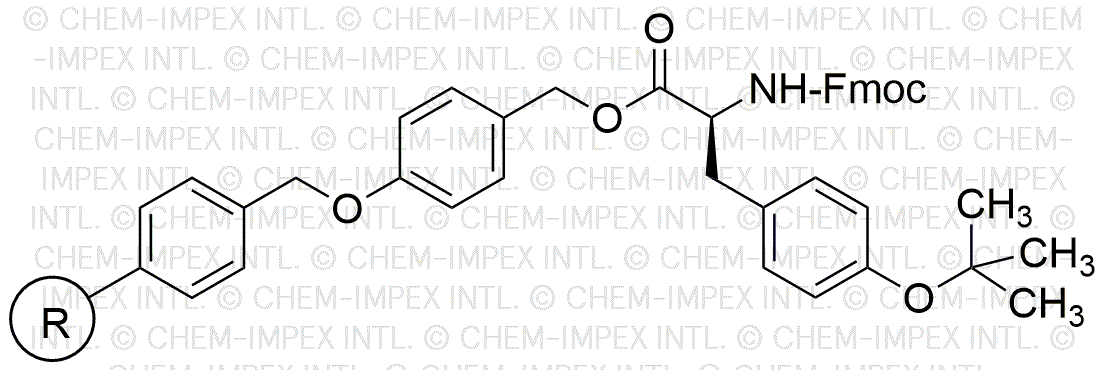Fmoc-O-tert-butyl-L-tyrosine 4-alkoxybenzyl alcohol is widely utilized in research focused on:
- Peptide Synthesis: This compound serves as a protecting group in the synthesis of peptides, allowing for selective reactions and enhancing the yield of desired products.
- Drug Development: It plays a crucial role in the design of novel pharmaceuticals, particularly in creating compounds that target specific biological pathways.
- Bioconjugation: The compound is used in bioconjugation processes, linking biomolecules to therapeutic agents, which is essential in developing targeted drug delivery systems.
- Research in Neuroscience: Its derivatives are utilized in studies related to neurotransmitter activity, aiding in the understanding of various neurological disorders.
- Analytical Chemistry: The compound is employed in analytical methods to assess the purity and composition of complex mixtures, ensuring high-quality results in research and industry.
General Information
Properties
Safety and Regulations
Applications
Fmoc-O-tert-butyl-L-tyrosine 4-alkoxybenzyl alcohol is widely utilized in research focused on:
- Peptide Synthesis: This compound serves as a protecting group in the synthesis of peptides, allowing for selective reactions and enhancing the yield of desired products.
- Drug Development: It plays a crucial role in the design of novel pharmaceuticals, particularly in creating compounds that target specific biological pathways.
- Bioconjugation: The compound is used in bioconjugation processes, linking biomolecules to therapeutic agents, which is essential in developing targeted drug delivery systems.
- Research in Neuroscience: Its derivatives are utilized in studies related to neurotransmitter activity, aiding in the understanding of various neurological disorders.
- Analytical Chemistry: The compound is employed in analytical methods to assess the purity and composition of complex mixtures, ensuring high-quality results in research and industry.
Documents
Safety Data Sheets (SDS)
The SDS provides comprehensive safety information on handling, storage, and disposal of the product.
Product Specification (PS)
The PS provides a comprehensive breakdown of the product’s properties, including chemical composition, physical state, purity, and storage requirements. It also details acceptable quality ranges and the product's intended applications.
Certificates of Analysis (COA)
Search for Certificates of Analysis (COA) by entering the products Lot Number. Lot and Batch Numbers can be found on a product’s label following the words ‘Lot’ or ‘Batch’.
Numéro de catalogue
Numéro de lot/série
Certificates Of Origin (COO)
This COO confirms the country where the product was manufactured, and also details the materials and components used in it and whether it is derived from natural, synthetic, or other specific sources. This certificate may be required for customs, trade, and regulatory compliance.
Numéro de catalogue
Numéro de lot/série
Safety Data Sheets (SDS)
The SDS provides comprehensive safety information on handling, storage, and disposal of the product.
DownloadProduct Specification (PS)
The PS provides a comprehensive breakdown of the product’s properties, including chemical composition, physical state, purity, and storage requirements. It also details acceptable quality ranges and the product's intended applications.
DownloadCertificates of Analysis (COA)
Search for Certificates of Analysis (COA) by entering the products Lot Number. Lot and Batch Numbers can be found on a product’s label following the words ‘Lot’ or ‘Batch’.
Numéro de catalogue
Numéro de lot/série
Certificates Of Origin (COO)
This COO confirms the country where the product was manufactured, and also details the materials and components used in it and whether it is derived from natural, synthetic, or other specific sources. This certificate may be required for customs, trade, and regulatory compliance.

